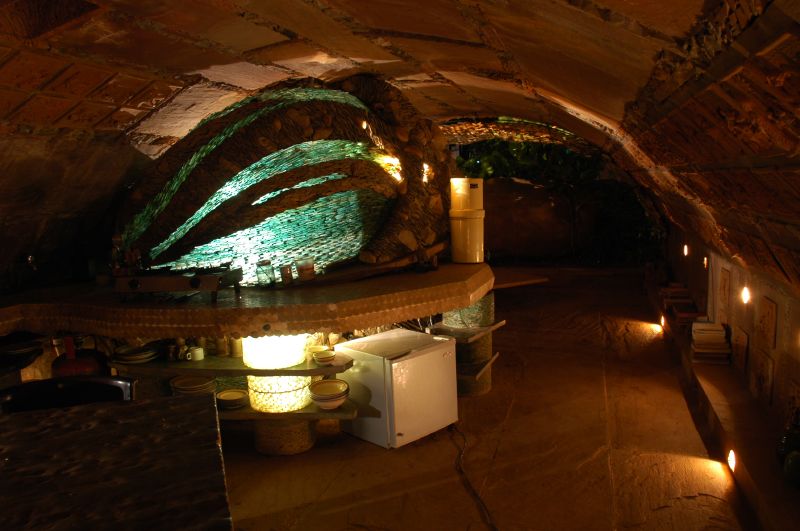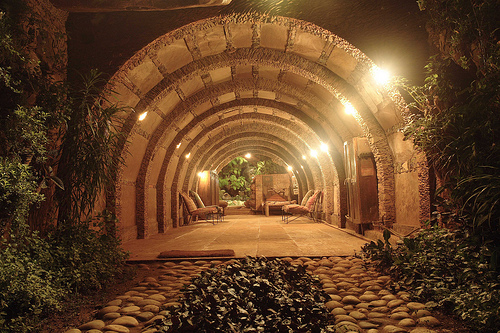There are many tales, documented and unsubstantiated about Nariman (Nari) Dossabhai Gandhi or Nari Gandhi as he was known as. He was one of the most remarkable creative voices in architecture and an article published in the eighties speculated that he was the inspiration behind Ayn Rand’s best-selling classic The Fountainhead where a brilliant architect builds the precursors of what we now know as organic architecture.
**
The story may not have been accurate because Nari studied architecture at Sir J. J. College of Architecture, Mumbai for five years in early 1950s,while the book came out in 1943. Nari however did work with the iconic Frank Lloyd Wright as an apprentice for a few years and Wright is widely believed to be the father of organic architecture and also the real inspiration behind Howard Roark, the uncompromising hero of The Fountainhead. Nari spent five years with Wright, possibly the most influential architect of his time and returned to India in early 1960s. He taught for a little while but his calling was building and the way he built altered and impacted contemporary architecture forever.
**
He worked more with hands than with architectural paraphernalia creating multiple textures from stone, brick, glass and wood, along the way making structures that flowed wilfully and yet easily, as if to the tune of some mysterious music. He trained unskilled workmen in various techniques. Building arches that looked as if they were suspended in mid air, embedding glass in masonry, bringing gardens almost indoors and blurring the difference between external and internal spaces. The structures had unpredictable geometric forms and like Wright’s work, they were in congruence with the earth they were built on. They were cavernous, reclusive and yet communicative with light and elements of Nature.
**
Many of us remember the famous homes he built for SH Daya, one of the few clients who understood Nari’s unusual take on design and architecture. Many Hindi films and TV series were shot in one of these distinct homes subsequently, always with the camera lingering on a complex web of arches and textured walls. Like all visionaries, he was driven by an inner conviction and did not really care for popular trends or even stubborn clients who wanted things done their way. But those who understood his ideology, trusted him like Daya and also film star Asha Parekh who had one of the most famous and well-guarded residences in Mumbai. The house was crafted out of red stone but reports claim, it was demolished in February 2006.
**
Whether he was designing public or private spaces, Nari’s muse was nature and also the sites he worked on. Over time, clients who gravitated towards him were the kind who did not need to see sketches to approve before building began. He had it all in his head, in his imagination. The dimensions, the layouts, the materials he wanted to use which could vary from hollow bricks to even terracotta pots used to create a ceiling! He had no qualms about working as a mason on his sites or learning pottery even though he had no reason to.
**
The movement of light, the flow of breeze, the gradations of earth and the expanse of sky were his building materials. His unique structures celebrated the effortless transition of one space to another. They had projections that were ambitious but also earth-bound features, as humble as the soil and stone they were was built from.
**
In his personal life, Nari was a soft-spoken though a very determined man, always clear about how he wanted to live and to build. He wore Khadi, was not interested in money and spent little and gave a lot away to those who needed help. His primary passion was architecture and like Wright, he wanted each of his buildings to be unique.
**
Before his genius could win wide-spread recognition, he died in an accident in 1993 near Khopoli on the way to one of his projects at Kolgaon.
**
Unfortunately many of his works have been demolished or changed beyond recognition but in 2009, on August 18, that happens to be his death anniversary, a book was released at the Sir JJ School of Architecture as a tribute. And even what is left of his legacy continues to inspire generations of architects with its almost spiritual dimensions and its passion for integrated, truthful, fearless architecture.
**
*The above piece was carried in the student edition of a national newspaper
Reema Moudgil has been writing for magazines and newspapers on art, cinema, issues, architecture and more since 1994, is an RJ, hosts a daily Ghazal show, runs unboxed writers, is the editor of Chicken Soup for The Indian Woman’s soul, the author of Perfect Eight (http://www.flipkart.com/perfect-eight-9380032870/p/itmdf87fpkhszfkb?pid=9789380032870&_l=A0vO9n9FWsBsMJKAKw47rw–&_r=dyRavyz2qKxOF7Yuc ) and an artist.










We first met Nari when we were students at MSU and he visited Baroda to do pottery at the Fine Arts Faculty; we became friends, and I was associated with the building of a house for the potter Nirmala Patwardhan at Lullanagar, Pune My job was to make weekly payments to the labour & to admire his work; Nari never understood women and the house was never completed, it was replaced by multistoreyed flats and I am afraid none of his works will remain; can’t something be done to save at least one or two ? If I’d not seen his work, I wouldn’t have actually known what architecture can be. What more can one say ?